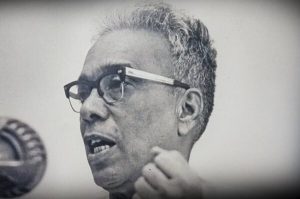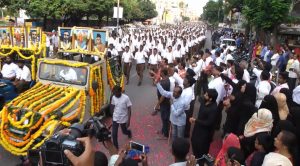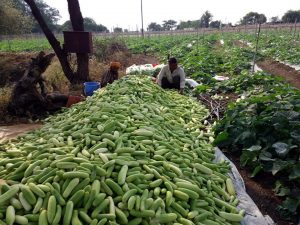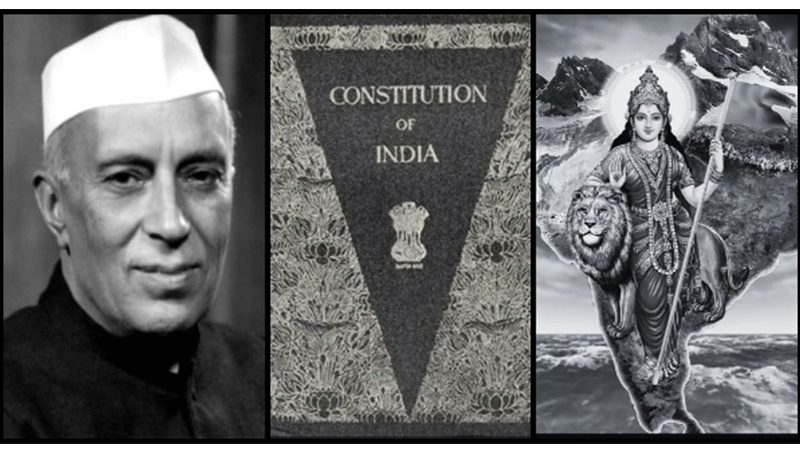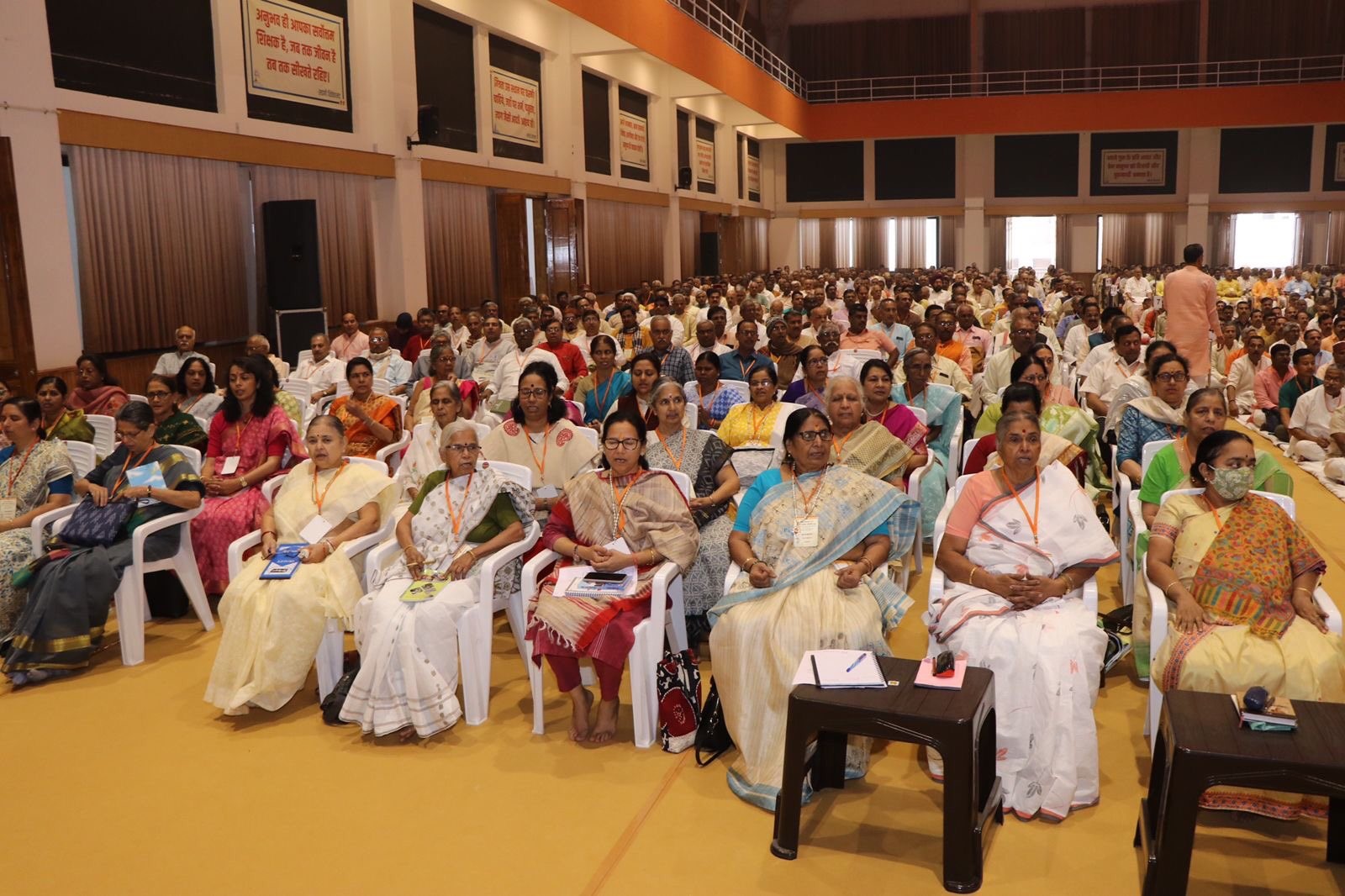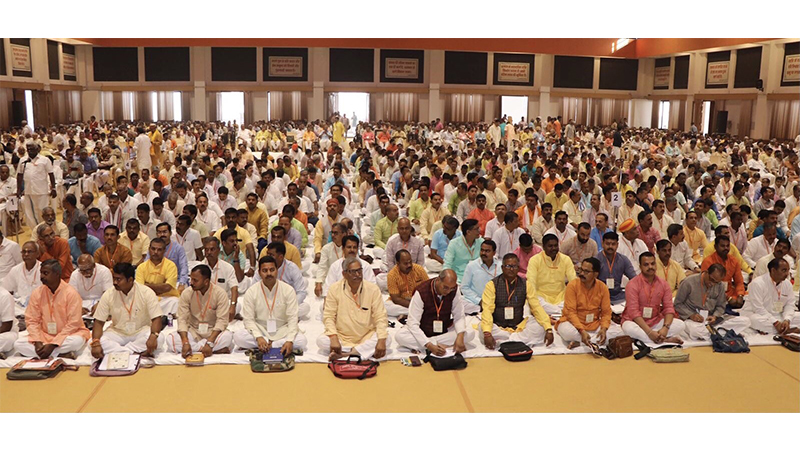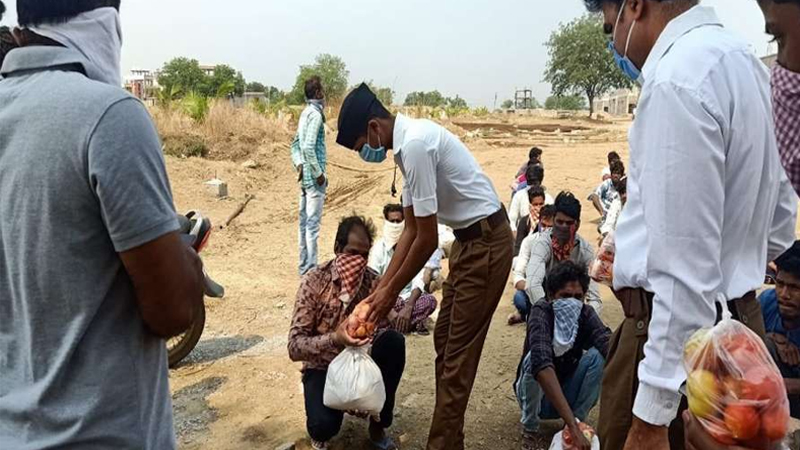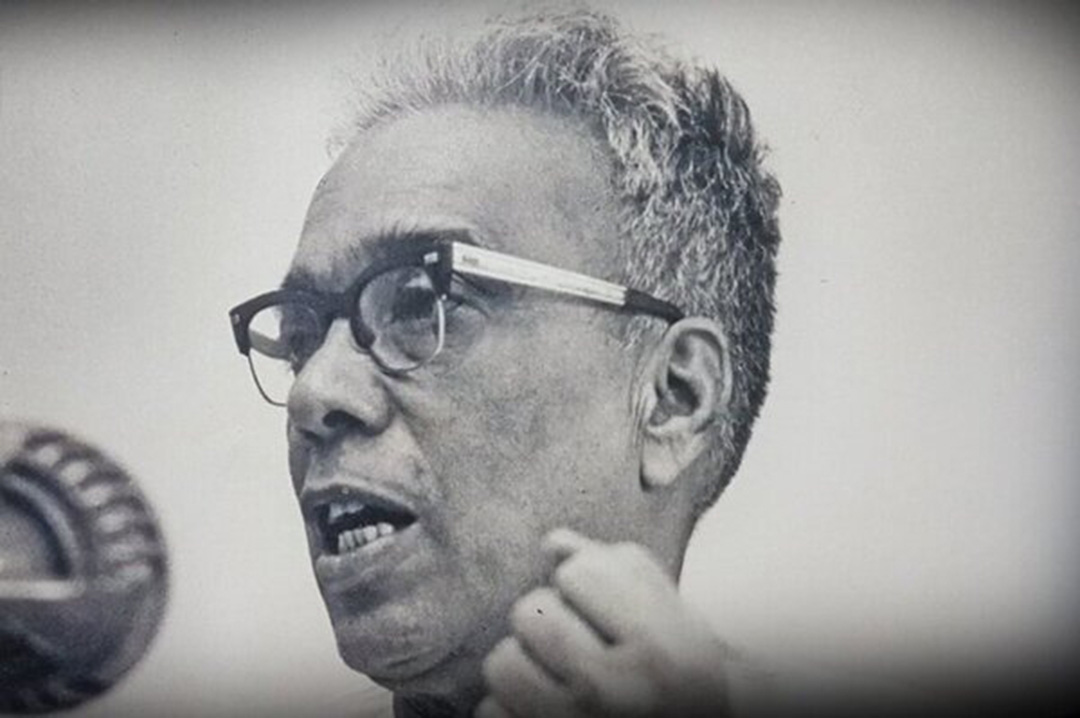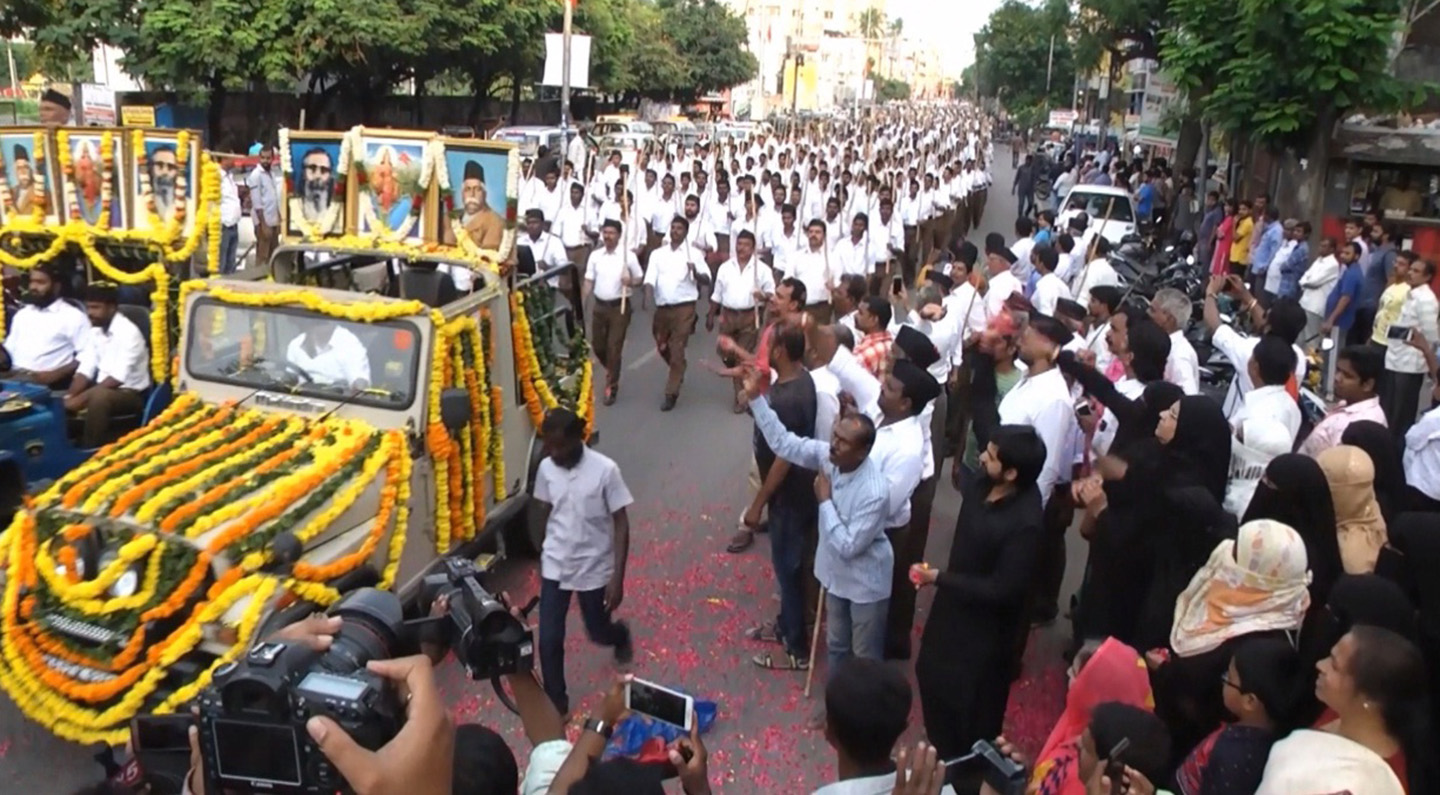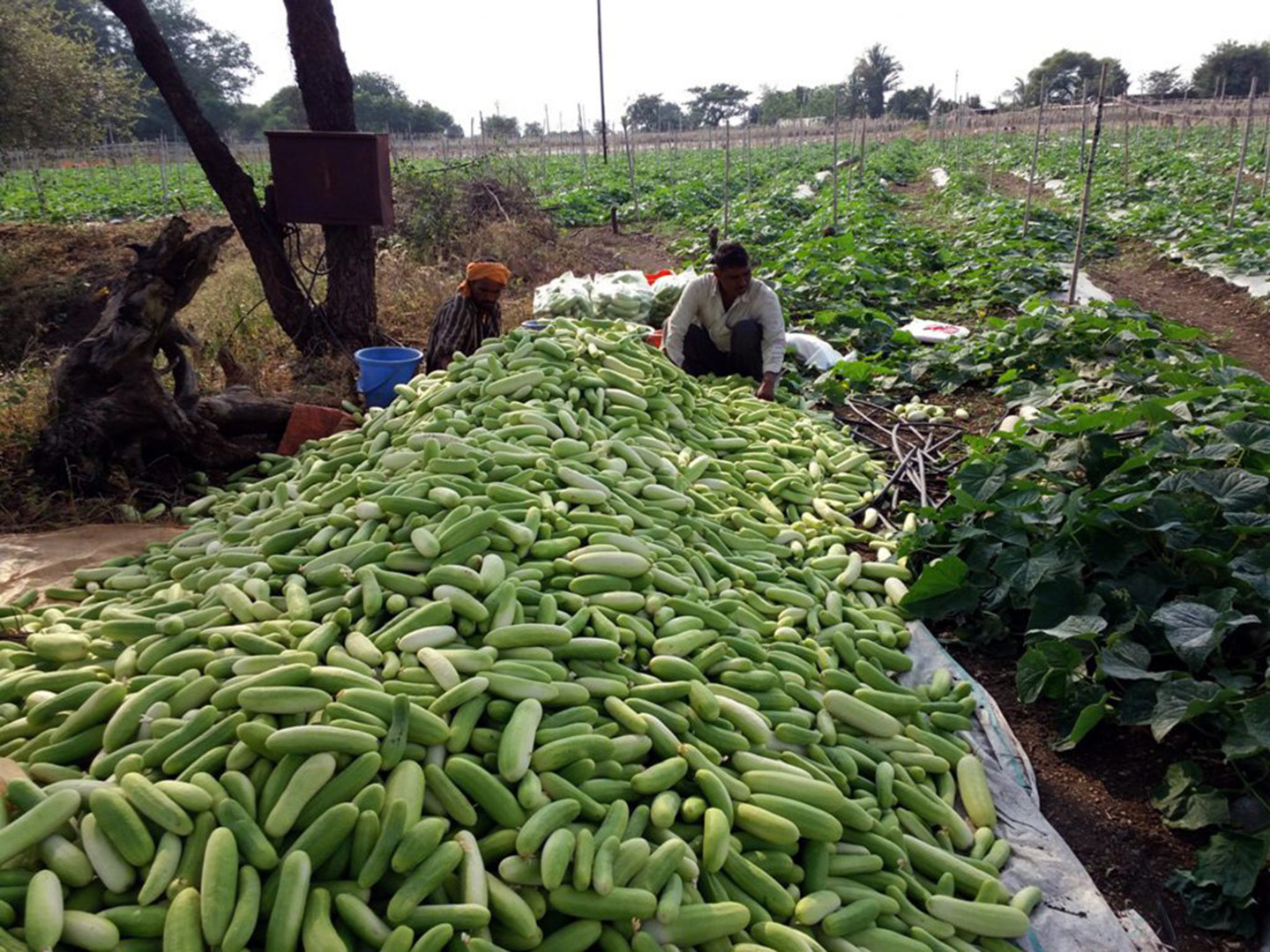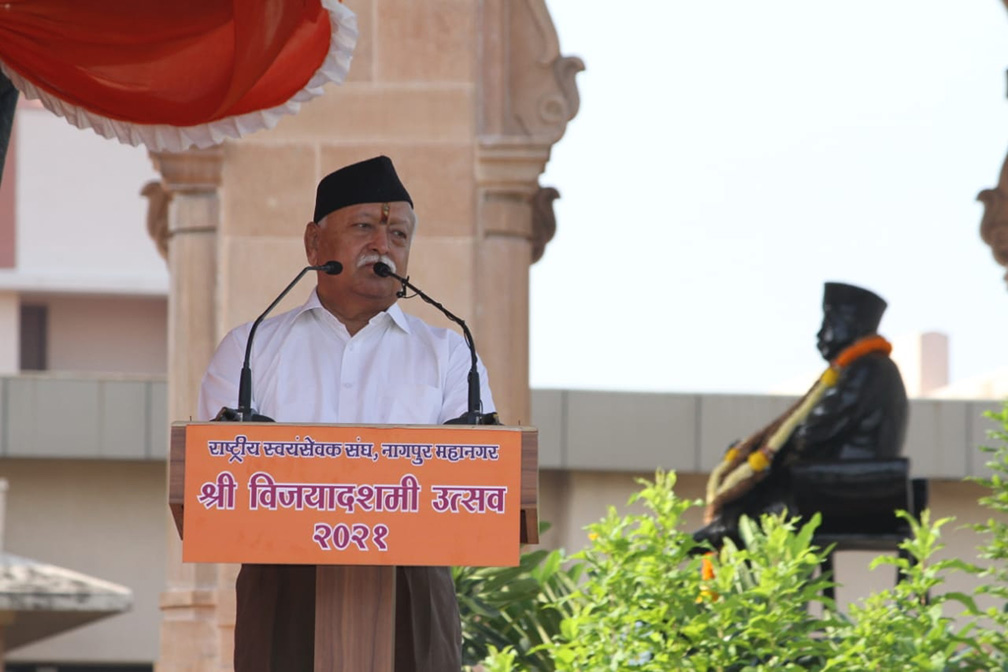The RSS ‘Shakha’
Updated: February 5, 2023 6:07
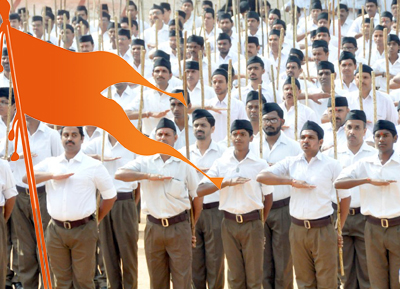
‘Shakha’ is a Hindi word. When translated into English, it means ‘branch’. The concept of RSS Shakha was conceived by its founder Dr. Hedgewar. A Shakha is held in an open ground for about an hour. It is held daily round the year without any break. The time of beginning and ending the Shakha is to be strictly adhered to and it is not altered. A Shakha is held in the morning or evening. Generally, the evening Shakha is meant for the students and the younger lot while the morning Shakha is meant for the relatively older lot who may not find time in the evening to attend a Shakha.
The RSS officially explains the concept of Shakha as: “A Saffron Flag (called the Bhagwa Dhwaj) flutters in the midst of an open playground. Youths and boys of all ages engage in varieties of indigenous games. Uninhibited joy fills the air. There are exercises, Suryanamaskar (a kind of Yoga), sometimes training in skillfully wielding the Danda (wooden stick). All activities are totally disciplined. The physical fitness programs are followed by group singing of patriotic songs. Also forming part of the routine is exposition and discussion of national events and problems. The day’s activity culminates in the participants assembling in orderly rows in front of the flag at a single whistle of the group leader, and reverentially reciting the prayer Namaste Sada Vatsale Matrubhoome (My salutation to you, loving Motherland). The prayer verses, even as the group leader’s various commands, are all in Sanskrit. The prayer concludes with a heart-felt utterance of the inspiring slogan Bharatmata Ki Jai. This, in outline, is the Shakha of RSS. The participants are the Sangh Swayamsevaks.”
Underlining the importance of the Shakha, the RSS further says, “The Shakha is the most effective and time- tested instrument for the moulding of men on patriotic lines – outreaching by far its physical dimension. The Sangh’s method of working is of the simplest kind, and there is hardly anything esoteric about it. Coming together everyday for an hour is the heart of the technique, and the Sangh has always grown only by personal contact. This is a self-contained mechanism; hence its success.
The daily Shakha is undoubtedly the most visible symbol of the Rashtriya Swayamsevak Sangh. The Shakha is as simple in its structure as it is grand in conception. No better example can be given to prove the truth of the adage that it takes a genius to simplify a mechanical tool, while even a third-rate engineer can complicate a simple mechanism! After almost 100 years since the inception of the Sangh, people continue to be surprised as to how such a simple tool as the daily Shakha can produce idealists and patriots of such sterling worth, willing to dedicate all their energies and talents to the cause of the Motherland, willing even to shed their lives if need be to protect the honour of the Motherland. Herein lies the extraordinary vision, skill and foresight of Dr. Hedgewar, the Founder of the Sangh.”
An RSS Shakha begins with the Swayamsevaks bowing their head to the flag. This is called Dhwaj Pranam (salutation to the flag). The Dhwaj pranam is done by putting right hand on center of chest facing towards the ground and bowing your head slightly while standing erect. A Shakha ends with a similar Dhwaj Pranam. The flag is hoisted everyday and then it is unhoisted at the end of Shakha, neatly folded and a Swayamsevak takes it to his home to bring it the next day.
The process of induction into the RSS is informal. Anyone who comes and does Dhwaj Pranam, becomes a Swayamsevak. There are no forms to be filled, no screening. Each Shakha head is known as Shakha Karyavah. The second-in-command is designated as Mukhyashikshak and the third-in-command is known as Gan-Shikshak.
Each Shakha is divided into a number of sections for functional purpose. Each section is called Gatt and it is headed by one of the experienced Swayamsevaks. The latter is designated as Gattnayak.
The emphasis of the RSS ever since its inception has been on running a ‘Daily Shakha’. This is a unique feature of the organisation as there is no holiday. The reason cited by RSS functionaries is that in everyday life, we must give atleast one hour for social work. This makes Shakha, an inherent part of the Swayamsevaks’ daily routine and helps to strengthen the bond with the organisation. Another reason cited is that the volunteers get Samskars (good values) by attending Shakha and everyday Swayamsevaks in their day-to-day lives get influenced by a number of negative things. So just as a utensil for eating food or drinking water has to be cleaned everyday to keep oneself healthy, similarly, a human body needs to go through positive physical, mental and spiritual experiences to maintain the level of good values in oneself. There has been a tradition of naming Shakha and each Shakha is generally named after one of the great Indians of the past. So, you have Shakhas, named after Bhagat Singh, Rajguru, Sukhdev, Abhimanyu, Arjun, etc.
For several decades, the emphasis of the RSS was primarily on ‘Daily Shakhas’. However, as many RSS Swayamsevaks went to different countries and settled there, they started holding weekly Shakha.
An interesting offshoot of this flexibility imbibed by the RSS is, “IT (Information Technology) Shakha.” This is a virtual Shakha meant primarily to allow, “periodic connect” with the IT professionals. IT Shakhas are mostly weekly in nature and there are one or two coordinators, who generally hold it online. The ‘IT Shakhas’, have been growing robustly ever since their inception.
So, the RSS has daily Shakha, weekly Shakha as well as the IT Shakha. The daily Shakha is also of two types, morning Shakha and evening Shakha. The morning Shakha is generally attended by the adults and the older lot. The evening Shakhas focus at the students.
On the basis of the age group, RSS has categorised all Swayamsevaks, who attend any kind of Shakha into four categories, “Shishu (kid), Baal (Child), Tarun (adolescent), Praud (old).” The broad age criteria for these categories are five years and below, 6-12 years, 13-18 years, above 50 years.
The philosophy guiding the concept of an RSS Shakha has been elaborated upon in, “The Story of the Sangh” (written by someone from the RSS under the interesting pseudonym of ‘A Swayamsevak”). It says, during and after the Shakha timings, Swayamsevaks interact in an extremely friendly and homely atmosphere. The members of the Shakha also maintain a warm and cordial relationship with the members of the Swayamsevaks’ families, be they young or old, men or women. As a result, new persons who come to participate in the Shakhas feel delighted and at home and unlike others in the society, the Swayamsevak never feels that social work is burden to him. Slowly, but steadily, seeing the dedication of senior Shakha workers, the Swayamsevaks start giving more and more time for the Shakhas. Simultaneously, in keeping with each one’s ability, they are given some small responsibilities. They are also provided with adequate training to effectively carry out these responsibilities. In the process, a succession of trainees grow to become trainers and the continuity from one generation to another is maintained. It is through this process that some of the more capable from among those who are trained thus choose to dedicate their full-time for the Sangh. They are sent to various parts of the country depending on where there is necessity. Such workers who are assigned full- time work are known as Pracharaks.
The ‘Daily Shakha’ of RSS has a permanent schedule with time fixed for every activity. The focus is on all three aspects, physical fitness, mental strength and spirituality. Here is a break-up of the daily schedule of a Shakha:
1.Beginning of the Shakha followed by warm-up through jogging/running (5 minutes)
2.Yoga, Suryanamaskar and games (40 minutes)
3.Recital of Sanskrit Shlokas known as Subhashit/ Amrit Vachan or patriotic songs. There are thousands of songs written by the RSS functionaries themselves, which are quite popular within the RSS. Every week four-five days the poems, songs and Sanskrit hymns are recited, there are some discourses related to the contemporary issues or ideological aspects at least twice or thrice a week. These activities are interchangeable and a Shakha Karyavah (who heads the Shakha), has the flexibility to chose which of the activities should be taken up on particular days of the week. (10 minutes)
4. Prayer and end of Shakha for the day. (5 minutes)
That comes precisely to be one hour or 60 minutes. The unique thing about a daily Shakha is that the timings are adhered to with precision, especially when it comes to the beginning or end of the Shakha. One may say that it is done with military precision. The discipline to follow the time schedule strictly is visible in every activity of the RSS and its affiliated organisation and the only reason is the importance of, ‘time schedule’, imbibed in Swayamsevaks through their daily visits to Shakha.
An important aspect of daily Shakha is the ‘Games’ which they play. The aim of these games is to inculcate a spirit of nationalism. Kabaddi and Kho-Kho, the two traditional Indian contact sports are played regularly at Shakha. Whenever there is a get-together of various Shakhas, the spirit of competitiveness is quite high in these matches. There are no ‘prizes’ for the winners. The game is played for the love of the sport. Even as for decades, Indian sports like Kabaddi and Kho-Kho were losing their sheen at the official sports platforms within the country, these two sports were being kept alive by the RSS as thousands of children and young men played it every morning or evening at the RSS Shakhas across the country and sometimes offshore also where many RSS Shakhas are held.
Let us have a look at some of the popular games played at the RSS Shakhas:
Mai Shivaji (I am Shivaji): The game is an outdoor one. Any number of players can play it. One person is designated as ‘Shivaji’ (the name has been taken from famous Maratha King Chhattrapati Shivaji whose exploits against Mughals are idealised by the RSS. He is one of the most revered personalities for Swayamsevaks for his bravery, staunch commitment to Hinduism and benevolence as a King). The game starts with one Swayamsevak running after the Swayamsevak designated as ‘Shivaji’ to touch his body. During the chase any Swayamsevak can cut this run through the gap between the former two and while doing that, he has to say loudly Mai Shivaji (I am Shivaji). So, now the Swayamsevak chasing the earlier ‘Shivaji’, has to run after the new one. The objective of this game is that a Swayamsevak should try to protect someone like Shivaji and take the attack on himself and the second one is that every Swayamsevak should feel like ‘Shivaji’ and imbibe the qualities of the Maratha King.
Mitra-Raksha (Defending a Friend): The Swayamsevaks will stand in a circle and form a human chain by holding hands. There will be one person inside who is the ‘friend’, there is one person outside the circle who is an ‘enemy’. The ‘enemy’ has to break into the circle and touch the ‘friend’. Everyone else has to ensure not to allow the ‘enemy’ to come close to the friend. The ‘friend’ can move inside or outside at his will, while the ‘enemy’ can also move inside or outside the circle but if he is inside, then he would be stopped from going outside by the rest. If the ‘enemy’ is outside the circle, then he would be stopped from coming inside. While saving the ‘friend’, the circle formed by joining hands shouldn’t break. The apparent aim of this particular game is to inculcate the sense of ‘protecting friends’. This strengthens the bond of friendship among Swayamsevaks.
Dilli Hamari (Delhi is Ours): In a small circle where the boundaries are clearly marked, one Swayamsevak will stand in the middle and shout Dilli kiski (Delhi belongs to whom), rest of the Swayamsevaks will answer by shouting, Dilli Hamari (Delhi is ours). This call will be repeated three times and then every Swayamsevak will try to enter the circle by pushing the others out. At the end of the game, whoever is standing in the circle is the winner. The same game has another version also where, ‘Delhi’, is replaced by Kashmir or, at times, ‘Lahore’ also. This game is apparently aimed at inculcating the sense of patriotism by making Swayamsevaks realise that the capital of the country, which is Delhi or New Delhi, belongs to each one of them. Similar is the case of ‘Kashmir’. When Swayamsevaks give a call for ‘Lahore is Ours’, that reflects the long-standing dream of RSS to have an, Akhand Bharat (an integrated India, which was divided into India and Pakistan in 1947).
There are around 50 such games listed in, ‘Shakha Surabhi’, one of the important publications of RSS, which is a primer for the Swayamsevaks and various functionaries, as far as conducting daily activities at Shakha is concerned.
These games are played under the supervision of Ganashikshak, and all the functionaries play these games on equal footing. The word Ganashikshak, comprises two words Gana, which broadly means a group of persons and Shikshak, which is a Hindi word for ‘instructor’. Each daily Shakha has generally one Ganashikshak. In his absence, the other senior functionaries often take the charge and perform his duty. The average number of Swayamsevaks attending a daily Shakha range from broadly 10 to 50.
The instructions while playing the games are given in ‘Sanskrit’ and the instructor also uses a whistle. The senior functionaries also use a whistle to perform most important activities in a daily Shakha. The RSS leadership over the years has been able to do extensive detailing which is available in its manuals in terms of how to conduct the daily activities at Shakha.
Indian martial arts termed as Niyudh and the traditional art of fighting with a wooden stick known as Dand yudh, are also taught at the Shakha. However, the time devoted to them is not much and it is part of the daily schedule of the Shakha.
An RSS Shakha begins daily with a ceremonial hoisting of the Saffron Flag and ends with the lowering down of the flag in a prescribed manner. While these two ceremonies happen, all Swayamsevaks stand in columns in straight lines. They bow their head to the flag on the command of the, Mukhyashikshak, at the beginning and end of the Shakha after which the flag is lowered down. A particular Swayamsevak is entrusted to take back the flag to his home. The Saffron Flag is known as Bhagwa Dhwaj (Bhagwa stands for Saffron while Dhwaj is the Sanskrit word for a flag). The Saffron Flag is hoisted and lowered at all the outdoor and most of the indoor functions of the RSS. It is the most revered element for any Swayamsevak.
